Sooty Grouse
Dendragapus fuliginosus
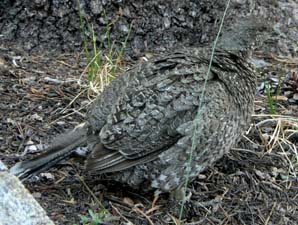
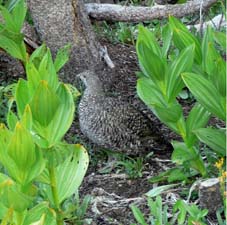
August 7, 2012
A Sooty Grouse was spotted in the backcountry of Yosemite this week. Using their camouflaged plumage, these year-round residents of Yosemite spend most of their time on the ground where they blend in perfectly with the lodgepole pine forest of the high country. As you unknowingly approach them hiding in the underbrush, they will wait until the last possible moment before taking off with a loud rush of flapping wings. Hikers may have heard the male during nesting season (May through June) issuing a deep, repetitive call that is very hard to locate. Inflated neck sacs covered by bare yellow skin act as resonators to help the call travel more than a quarter mile.
Alpine Mammal Survey
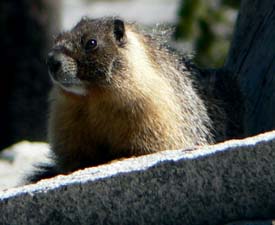
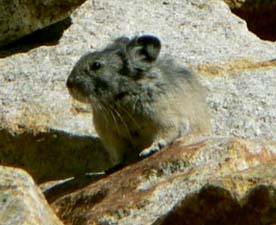
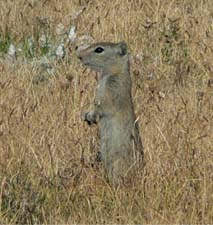
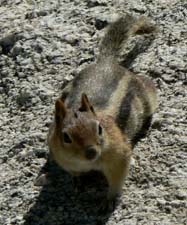
July and August
This is the fourth year that park researchers have been surveying the distribution of alpine mammals in Yosemite National Park. This survey is part of a cooperative effort between the USGS, NPS, and six other government agencies and universities. The primary goal of the study is to model the range shifts of these mammals that may result from the climactically driven transition of alpine meadows to woody dominated communities in the Sierra Nevada mountain range. The population distributions of the Yellow-bellied marmot (Marmota flaviventris), pika (Ochotona princeps), Belding's ground squirrel (Spermophilus beldingi), and golden-mantled ground squirrel (Spermophilus lateralis) are being surveyed at five locations throughout Yosemite. The survey locations are all above 8,000 feet in elevation and represent the northern, central, and southern parts of Yosemite.
The two techniques used during the survey are transect line counts and point counts. The transect line is a 10 km (6.2 mile) section of trail that a researcher walks slowly. He or she travels along the line being as observant as possible and recording any individuals of the target species that can be identified by sight or by sound. Along that line there are ten randomly chosen points and a researcher stops at each point to record any individuals of the target species that are observed in a span of 15 minutes. When the researcher records the distance to the target species, along with other details about the observation, the data can be analyzed to get a good estimate of the target species populations.
Table 1. Average Number of Mammals Counted During Transect Line Counts*
| Location | Marmot | Golden-mantled
ground squirrel |
Belding's ground squirrel |
Pika |
| Buena Vista Peak |
21 | 13 | 0 | 4 |
| Kerrick Meadow |
14 | 10 | 17 | 1 |
| Chain Lakes |
14 | 7 | 0 | 2 |
| Red Peak Pass |
10 | 4 | 0 | 38 |
*includes data from two samples of the transect line, rounded up to the nearest whole number.
Table 2. Average Number of Mammals Counted During Point Counts*
| Location | Marmot | Golden-mantled ground squirrel |
Belding's ground squirrel |
Pika |
| Buena Vista Peak |
6 | 1 | 0 | 4 |
| Kerrick Meadow |
5 | 5 | 11 | 0 |
| Chain Lakes |
6 | 4 | 0 | 1 |
| Red Peak Pass |
1 | 2 | 0 | 22 |
*includes data from two samples of the transect line, rounded up to the nearest whole number.
